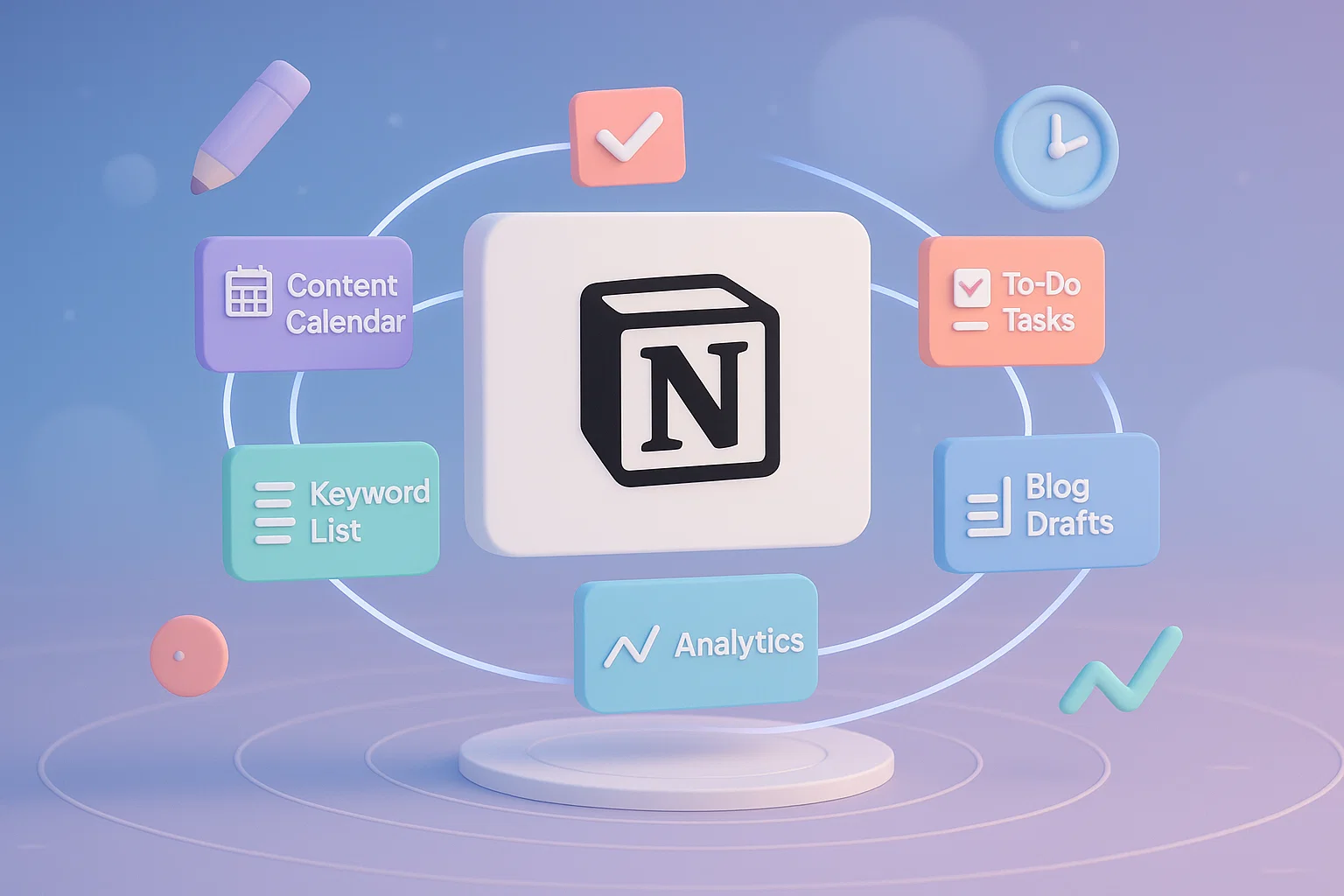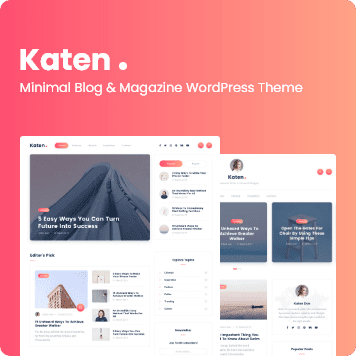
Why Start Using Notion Planner Should be your go-to strategy in 2025
When I started blogging a few years ago, my workflow was a mess – scattered notes, missed deadlines, and endless tabs open on my browser. By 2025, I knew I needed a change if I wanted to take my blog seriously. That’s when I discovered Notion as a planner, and honestly, it’s been a game-changer. I’ve gone from chaotic to organized, and my blog has never been more consistent. In this post, I’ll share how I use Notion to plan, track, and grow my blog, and why I think it’s the ultimate tool for bloggers looking to streamline their workflow this year.
Why I Chose Notion as My Blogging Planner
I’d heard about Notion for years – it’s been a productivity darling since its launch in 2016 – but I didn’t give it a serious try until 2025. I was juggling ideas for blog posts, affiliate partnerships, and social media schedules, and my old system of sticky notes and random Google Docs just wasn’t cutting it. I needed a single place to organize everything, and Notion fit the bill perfectly. Here’s why I fell in love with it for blogging:
- All-in-One Workspace: Notion lets me keep my blog ideas, schedules, and trackers in one place, so I’m not bouncing between apps.
- Customizable Templates: I can create a planner that fits my exact needs; whether it’s a content calendar or a goal tracker.
- Collaboration Features: When I started working with a guest writer in 2025, Notion made it easy to share my editorial calendar and collaborate in real-time.
- Cross-Platform Access: I can access my planner on my laptop, phone, or tablet, which is perfect for planning on the go.
- Free Plan Option: Notion’s free tier is generous enough for solo bloggers, though I upgraded for extra features like unlimited blocks.
The first time I set up my Notion planner, I felt a wave of relief. Everything I needed was finally in one spot, and I could focus on creating content instead of hunting for misplaced ideas.
Step 1: Setting Up My Notion Planner for Blogging
Getting started with Notion was easier than I expected, even though I’m not a tech wizard. I’ll walk you through how I set up my Notion planner for blogging, step by step, so you can replicate it for your own workflow in 2025. Before diving in, make sure you’ve got a solid hosting provider for your blog—I recommend checking out my Bluehost review for 2025 to find a reliable option for new bloggers.
- Create a Blog Dashboard: I made a main page in Notion called “Blog Central” with sections for my content calendar, ideas, and metrics.
- Build a Content Calendar: Using Notion’s table view, I set up a calendar with columns for post titles, due dates, status (e.g., “Draft,” “Published”), and links to affiliate campaigns.
- Track Ideas and Research: I added a database for blog post ideas, with tags for topics (e.g., “SEO,” “Affiliates”) and a column for research notes or links.
- Monitor Goals and Metrics: I created a simple table to track monthly goals; like traffic or affiliate earnings, alongside actual results.
- Use Templates for Consistency: For each blog post, I made a template with sections for outline, draft, and SEO checklist, so I never miss a step.
My Tip: Start with Notion’s built-in templates for project management or editorial calendars, they’re a great foundation, and you can tweak them to fit your blogging needs. If you’re new, Notion’s guides are super helpful for getting started.
Step 2: How Notion Streamlined My Blogging Workflow
Before Notion, my blogging workflow was a mess of missed deadlines and forgotten ideas. Here’s how using Notion as a planner transformed my process in 2025:
- Centralized Planning: Having all my blog tasks in one Notion workspace means I never lose track of ideas or deadlines. I used to forget half the posts I wanted to write; now, they’re all logged and scheduled.
- Better Time Management: The content calendar helps me batch my work. For example, I’ll write drafts on Mondays and schedule social media posts on Fridays, which keeps me consistent.
- Improved Focus: With a clear plan, I spend less time wondering what to do next and more time actually writing. I’ve doubled my output, publishing 8 posts a month instead of 4.
- Seamless Collaboration: When I worked with a guest writer, I shared my Notion calendar with them. They could see deadlines and add their drafts directly, which saved us so much back-and-forth.
- Tracking Progress: Seeing my traffic and affiliate earnings in Notion motivates me to keep going. I hit a personal record of $200 in affiliate income last month, thanks to better planning.
Real Example: I used to scramble to write posts at the last minute, often missing affiliate campaign deadlines. With Notion, I planned a series of posts for a product launch two months in advance, scheduled them perfectly, and earned a commission I would’ve missed otherwise.
Step 3: Understanding Notion’s Pricing and Plans in 2025
Notion’s pricing is pretty flexible, which is great for bloggers at any stage. Here’s a breakdown of their plans in 2025 to help you choose the right one for your blogging needs:
- Free Plan: Perfect for solo bloggers – unlimited pages and blocks, basic sharing, and access to templates. I started here and it was more than enough.
- Plus Plan ($10/month): Adds unlimited file uploads and version history, which I use to keep track of post revisions.
- Business Plan ($15/month): Great for teams, with advanced permissions and collaboration tools – ideal if you’re working with contributors.
- Enterprise Plan (Custom Pricing): For larger organizations, with extra security and support. Most bloggers won’t need this.
My Experience: I upgraded to the Plus plan after a few months because I wanted the version history feature; it’s been worth every penny for keeping my drafts organized. If you’re just starting, the free plan will likely cover your needs.
Step 4: Using Notion to Boost Affiliate Marketing for My Blog
One unexpected benefit of using Notion was how it helped me with affiliate marketing, a big part of my blog’s income in 2025. I also use Notion to plan affiliate strategies for other ventures, like my ecommerce projects; check out my guide on how to start a Shopify store in 2025 to see how Notion can help there too. Here’s how I integrated affiliate planning into my Notion setup to maximize my earnings:
- Affiliate Tracker: I created a table in Notion to list my affiliate programs (like Notion’s own affiliate program), with columns for links, commission rates, and deadlines for campaigns.
- Content Planning: I tag blog posts in my content calendar that include affiliate links, so I can prioritize them and track their performance.
- Earnings Dashboard: I added a section to log monthly affiliate earnings, which helps me see what’s working and what isn’t.
Affiliate Tip: Notion’s affiliate program itself is a nice perk – I earn a commission for every new user I refer, and it’s easy to share my planner templates with readers as a bonus. It’s been a great way to add value while earning a little extra. I also use tools like Pretty Links to manage my affiliate links cleanly within my blog posts. To boost affiliate content visibility, SEO tools are a must – see my comparison of SEO AI tools for 2025 to find the best ones for your blog.
Join Notion’s Affiliate Program →
Step 5: A Few Things to Watch Out For with Notion
Notion has been incredible, but it’s not perfect. Here are a few things I learned along the way that might help you as you get started with using it as your blogging planner:
- Learning Curve: Notion can feel overwhelming at first with all its features. I spent a couple of hours watching tutorials on YouTube to get the hang of it.
- Free Plan Limits: The free plan is great, but you might hit block limits if you create a lot of content – I did, which is why I upgraded.
- Offline Access: Notion’s offline mode isn’t the best, so I make sure to plan ahead if I know I’ll be without internet.
My Advice: These quirks haven’t stopped me from loving Notion, but they’re good to know so you can plan accordingly. If you’re new, start small with just a content calendar and expand as you get comfortable.
My Final Thoughts on Using Notion as a Blogging Planner in 2025
Looking back, adopting Notion as my blogging planner in 2025 was one of the best decisions I made for my blog. It turned my scattered ideas into a streamlined workflow, helped me hit my publishing goals, and even boosted my affiliate earnings. Whether you’re a new blogger trying to stay organized or a seasoned creator looking to scale, Notion can be your secret weapon. If you’re just starting your blogging journey, I highly recommend checking out my guide on how to start a blog in 2025 for more foundational tips to pair with Notion’s planning power. I’d love for you to give Notion a try; start with the free plan, set up a simple planner, and see how it transforms your blogging journey.
One Last Tip: Don’t overcomplicate your planner. Focus on what keeps you productive – mine is all about my content calendar and affiliate tracker. Find what works for you, and let Notion do the heavy lifting.
Start Planning with Notion Today →
Affiliate Disclaimer
Just so you know, this post includes affiliate links. If you sign up for Notion through them, I might earn a commission at no extra cost to you. I only recommend tools I use and love, like Notion. Here’s who I’m partnered with:
- Notion Affiliate Program
- Pretty Links Affiliate Program
Thanks for supporting my blog, it helps me keep creating content like this!
P.S. I’m also exploring other affiliate partnerships to bring you more value. Stay tuned for updates!






Leave a Reply